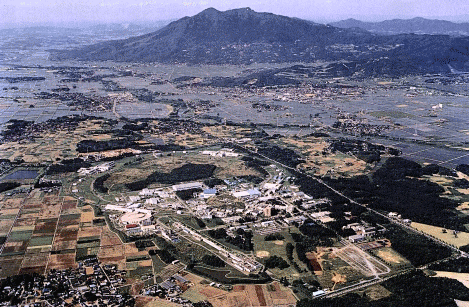Circular Colliders Have Been the Top Runner
In a circular collider, the same electrons and positrons go around the ring again and again so that they can gain energy each time they pass the same accelerating sections. Thus, even with a relatively low accelerating field, we can accelerate beam particles to a relatively high energy. In this way, the TRISTAN e+e- collider has allowed us to study elementary processes at center-of-mass energies up to 64 GeV and produced important physics results such as the confirmation of gluon self-coupling and the determination of the quantum numbers of the b-quark. The LEP collider, which is the highest energy e+e- collider at present, is also of this type. It is, however, practically impossible to realize a circular collider to go beyond LEP because of the energy loss due to synchrotron radiation which is proportional to the fourth power of the beam energy.

The TRISTAN e+e- Collider at National Laboratory for High Energy Physics (KEK)
To next page,
To previous page,
To contents
webmaster@www-jlc.kek.jp Feb 08, 1995

